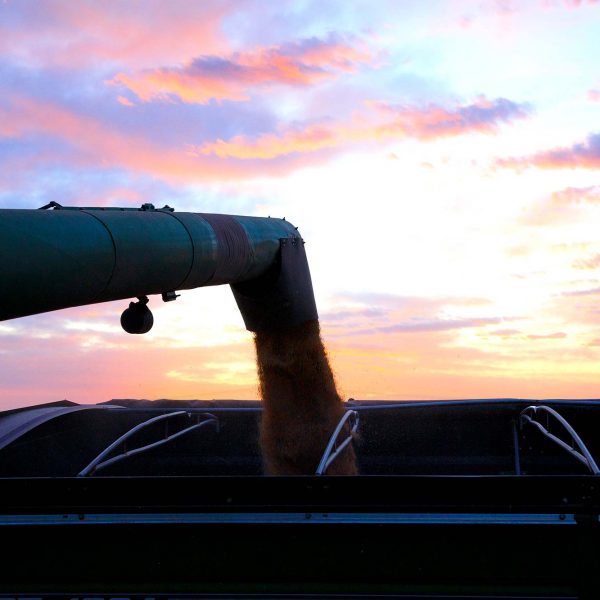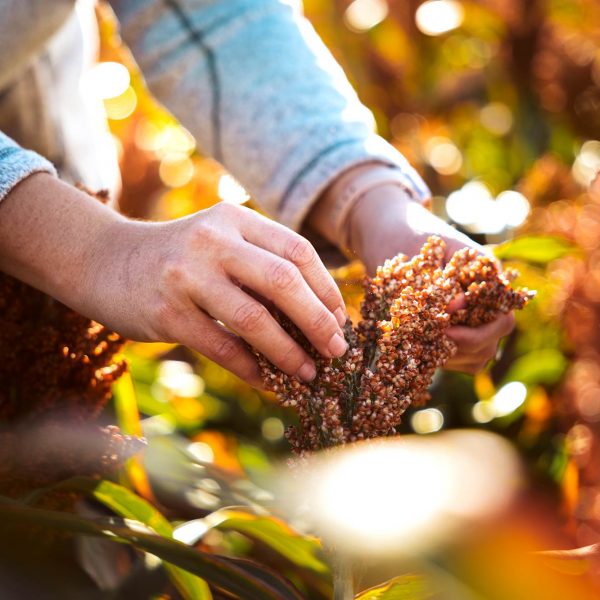Make or Break Time for Grain Sorghum
HP/MAFG July 2023
Written by Dr. Brent Bean, USCP Agronomy Director
In late July and early August much of the grain sorghum throughout the country, and especially in the High Plains, has reached the boot or heading stage. This is a critical time in the life of the sorghum plant as both weather and biological stress can greatly affect the final grain yield.
By the time sorghum has reached the boot stage, the potential number of kernels that will occupy the head or panicle has been determined. However, both water and heat stress during boot, flowering and early grain fill will impact how much of this potential is reached. Studies have clearly shown that avoiding water stress at the boot stage will greatly increase final grain yield. Those growers with the ability to irrigate can avoid water stress at this time, unfortunately, this cannot be said for avoiding heat stress.
The most sensitive period for heat stress to occur is from head emergence through flowering and this period lasts approximately 15 days. A Kansas State University growth chamber study showed grain set was reduced approximately 50 percent when heat stress was imposed for several hours with a maximum daily temperature of 97 degrees and a minimum night temperature of 79 degrees for five days during this 15-day critical growth stage. Very little grain set loss was noted when stress was applied outside of this 15-day window. Globally, much research is now ongoing to develop hybrids with better heat stress tolerance. In addition, breeders are working to increase cold tolerance to allow for earlier planting to avoid sorghum flowering during the peak heat days of the summer.
There are several insects and diseases that can cause biological (biotic) stress once sorghum approaches the boot stage. With much of the sorghum planted late this growing season, insects including sorghum aphid (sugarcane aphid) and midge, may be more of an issue than previous growing seasons. Boot to early grain fill is generally when the sorghum aphid begins to infest fields. Scout fields, and apply an insecticide if 25 percent of the plants become infested with 50 aphids. Check with your state extension service for a more precise threshold based on growth stage and scouting information.
Midge infestations have been occurring more often in Kansas and other states the previous two years, and have been an issue in South Texas this year. Midge can be a stealth robber of yield because they infest sorghum during flowering, yet the damage they cause cannot be seen until grain-fill when it’s too late to prevent the loss in grain. Begin scouting as soon as the first sorghum heads begin to bloom and continue scouting every three days until flowering is completed. Look for a small, reddish-orange gnat looking fly. The threshold for insecticide treatment varies with the yield potential and value of the crop, but one to two midge for every four sorghum heads can easily justify treating. Check online for regional extension service scouting tips and threshold for midge.
Other insects to watch for during grain fill are stink bugs and headworms. Once the grain has reached hard dough the damage that can be caused by these insects is greatly reduced.
In the High Plains, foliage diseases are normally not an issue in sorghum. However, they are a problem in wet, humid areas of the country. When foliar diseases infect sorghum prior to heading, the impact on yield can be significant and even devastating. If the disease first occurs after heading the impact on yield is reduced.
Anthracnose is easily the most troublesome disease in these wet, humid environments. Timely application of a fungicide should be made in those fields where a susceptible hybrid has been planted, and disease is present prior to heading. The best time to apply fungicide is at boot to early flowering.
In the absence of disease pressure, research has shown that an application of a fungicide seldom results in an economic return. Although the sorghum plants may remain greener and look healthier when fungicide has been applied, yield is seldom increased.




